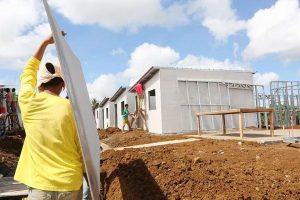GROWTH in the wholesale price of construction materials in Metro Manila came in at a seven-month low in March as inflation eased with interest rates driven higher, an analyst said.
Preliminary data from the Philippine Statistics Authority on Monday indicated that the construction materials wholesale price index (CMWPI) in the National Capital Region (NCR) rose 7.7% year on year in March, easing from 9.1% in February but still higher than the year-earlier reading of 6.6%.
This was the slowest CMWPI reading since the 7% posted in August.
For the first quarter, the CMWPI averaged 8.7%.
Security Bank Corp. Chief Economist Robert Dan J. Roces said the global economy continues to recover from the coronavirus disease 2019 (COVID-19) pandemic and the reopening could lead to more demand for construction materials, which could push prices higher.
“However, global supply chain disruptions and logistical challenges may constrain the supply of these materials, which could put downward pressure on prices,” he added in an e-mail.
Among the 17 commodity groups, fuels and lubricants contributed the most to the slowdown of price growth, contracting 8% after posting growth of 1.4% in February.
Also posting slower growth were tileworks (1% in March from 4.2% in February), and reinforcing and structural steel (7.1% from 10%).
Four commodity groups posted price growth in March: painting works (12.9% from 11.6% in February); hardware (7.7% from 7.1%); doors, jambs, and steel casements (6.1% from 5.8%); and plumbing fixtures and accessories/waterworks (4.1% from 3.9%).
Mr. Roces said fuel prices in the next few months will remain volatile and “are likely to continue to be influenced by various factors such as global oil prices, supply and demand dynamics, and geopolitical tensions.”
Mr. Roces added that construction demand will continue to rise this year.
“In terms of the outlook for prices of building materials, it is expected that the recovered economy will be able to keep up with the high-interest rate environment, and construction projects may continue to trend up this year,” he said. — Bernadette Therese M. Gadon

